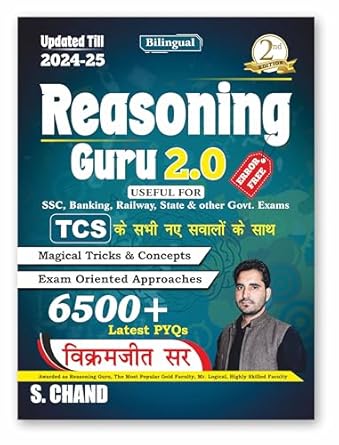- Physiological Basis of Emotion
- Emotional Behavior
- Emotional Development
- Human Emotions Develop
- Emotional and Social
- Theories of Emotions
Cognition and Emotions - Syllabus and Study Material
Emotion
According to Drever (1964), emotion involves bodily changes of a widespread character-in-breathing, pulse, gland secretion, etc. – and, on the mental side, a state of excitement or perturbation, marked by a strong feeling. The following are the components of emotion:
- Cognitive or thinking: emotions are usually directed towards people or objects and we know the situation is dangerous rather than harmless as a result of thinking.
- Physiological: there are generally a number of bodily changes involved in emotion, many of them (such as increased heart rate, increased blood pressure, increased respiration rate, swearing) occur because of anousal in the sympathetic division of the autonomic nervous system or hormonal activity within the endocrine system.
- Experiential: the feelings that is experienced, which can only be assessed in the human species.
- Expressive: facial expression and other aspects of non-verbal behavior such as bodily posture.
- Behavioral: the pattern of behavior (e.g. fight or flight) produced by an emotional state.
Emotions are transitory states, characterized by six features. First, emotions are neither overt behaviors nor specific thoughts; they are experiences. As a result, emotions are often mixed and even contradictory; assigning specific labels to them may be difficult. Second, emotional experience has valence, which means it her positive or negative, something you would like either to enhance or eliminate. Most people tend to act in ways that bring about happiness, satisfaction, and other positive emotions and to avoid doing things that cause pain, anxiety, disgust, or sadness.
Third, emotions are passions, not actions. Eating, for example, is an action, but hunger is a passion. Actions are initiated by the actor, whereas passions happen to the actor. The passionate nature of emotions does not mean that you have no control over them, however, because of their fourth feature: emotions arise in part from a cognitive appraisal of a situation. Emotions depend not just on situations but on what you think about those situations, such as how you interpret their potential for threat or pleasure. Emotions reveal the individual as both agent and object, as both I and me, both the controller of thoughts and the recipient of passions.
Fifth, emotions are accompanied by bodily responses. The facial and bodily movements that accompany emotions are partly reflexive and partly learned. Finally, emotions vary in intensity, from the quiet satisfaction of a person watching a beautiful sunset to the raging fury of a wrong lover. The importance of this feature of emotion is evident in people whose emotional intensity is very low. Nothing seems to get them excited; they appear to take no real pleasure in anything. An emotion is a valenced experience that is felt with some intensity as happening to the self, generated in part by a cognitive appraisal of the situation, and accompanied by both learned and reflexive physical responses.
- Physiological Basis of Emotion: The physiological reactions that accompany emotions are regulated by the two parts of the autonomic nervous system. That is, activation of the sympathetic nervous system readies the body for vigorous activity, producing such reactions as increased heartbeat, blood pressure, and respiration. In contrast, activation of the parasympathetic nervous system influences activity related to restoration of the body’s resources; for example, blood is diverted to the digestive organs and the process of digestion itself increases. We are aware of such changes but cannot directly control them. However, some evidence indicates that many persons can learn to influence activity in the autonomic nervous system through the process of biofeedback. Individuals can often generate both the physiological reactions and the subjective feelings associated with various emotions through cognitive activity. Emotion consists of cognitive, physiological, experiential, expressive, and behavioral components. The papez circuit based-on the hippocampus, nypothalamus, and thalamus was suggested as the ftasis of emotion. This was later modified into the J. Papez-Charles MacLean limbic model, In which there was more emphasis on the role of the amygdala. (More recently, Ledoux argued that there are two [brain systems involved in emotion: one involves the amygdale and autonomic and enocrine changes, and the other involves direct transmission of “information from the thalamus to the cortex. Limbic it theories of emotion are most relevant to fear and anger, and tend to de-emphasise the role of the cortex in emotion. The frontal lobes are also involved in emotion.
- Emotional Behavior: By definition, emotion involves a disruption of current behavior, and in child and adult alike restraints sometimes have to be imposed. Learning how to control aggression and anger begins when the adult learns how to control his own emotional behavior and feelings. Children need a positive adult model in order to achieve their individual self image and identification, if the adult is unsure and inconsistent in his own role, the child in turn will have a difficult time deciding just who he is.
Parents who have created a warm, loving, and secure atmosphere for the infant are helping him to enter early childhood with the minimum disruption. But it is at this point that the parent needs to become aware that over-dependency can be helpful, the parent may overreact in a protective or autocratic way. Both are to be avoided.
For the most part, fears are learned. Parents can do much in “helping the child to avoid fears by not displaying fears themselves. Sometimes children have to learn not to fears, as for example with thunderstorms. This can be done by patiently showing the child the real beauty of the storm and quietly explaining it. If parents refrain from putting night lights in the child’s room and from threatening him with bed in the dark for punishment, and do not allow him to be frightened by older children’s stories of monsters hiding in the dark, a youngster may grow up never thinking of darkness as frightening. Some fears and anxieties are inevitable, but they can be lessened by creating a relaxed home atmosphere.
Anger and aggression can best be handled by understanding. The temper tantrums of the negativistic child are universal. They may be lessened in frequency and degree (but not eliminated entirely) by being ignored (if possible), or by finding a cause, such as over tiredness. Giving a child what he wants he throws a tantrum is a good example of reinforcing an undesirable response. On the other hand, punishing aggression severely leads to hostility. This is obviously easy to say but very difficult to handle. Where possible, parents should steer the energy of aggression into more constructive channels. In a latter chapter we shall have to say about aggression. - Emotional Development: In a very real way we can think of emotions in the child as reactions to the world around him. Most of the infant’s emotions center on physiological needs and they change later as language enters his repertoire of responses. As later emotions appear, they may be used to control such early responses as fear, anger, and affection. Emotions follow a general-to-specific of development, from general excitement to a specific focus, such as hostility toward a baby brother. By the age of two, most children have shown patterns of fear, disgust, anger, jealousy, distress, excitement, delight, joy, elation, and affection for specific people.
That maturation plays a significant part in emotional development is shown by the fact that children will cry, smile, or laugh even if they have not had an opportunity to observe these reaction in others; even deaf-blind children show such behavior. The role of learning can be seen, however, in that different methods of expression of a particular emotion occur among different cultures. We can learn specific tears, of snakes, for example, just by being told that some snakes are harmful. Affection for parents may first develop out of simple baby tending and then emerge into an over dependency. Jealously may arise from the competition for attention from a new baby in the family, and later develop into bickering sibling rivalry. Sympathy is another socially instigated emotion involving identification with others in distress. Childish sympathy can be seen in one toddler crying just because another one is.
Dependency, though inevitable in the infant, can become a problem in the order child or adult. Several kinds of early experience can lead to dependency. The fear of rejection, the withdrawal of love, or over protection. For independence to be reached, the child needs a somewhat permissive climate in which he can make choices on his own (within reason). Motivation to succeed is related to independence; it is learned gradually, but fairly well developed by the age of seven. Children with strong achievement motives in our middle. Class culture are independent, concerned with mastery, and able to postpone gratification of their desires. At first, around the age of two, children are not very clearly goal-directed; activities are just ends in themselves. Gradually, if the child is not too often frustrated, a sense of accomplishment emerges. By three years of age he may seek approval for jobs done, and at four he may develop shame over his own incompetence. By seven, children have build up the prerequisites for achievement. When the child is blocked, anger may result, for anger is usually provoked by frustration. This emotion, which begins as a natural response, often develops from aimless aggression to the specifics of hostility – in the older child and adolescent taking on patterns of sulking. The vigor and duration of such outbursts diminish gradually in childhood, but not consistently. Aggression will tend to increase if it is rewarded; and the more it occurs, the more it will become a dominant mode of emotional expression. In the child and adolescent, anger often comes out because the individual feels himself to be in an environment where everybody is critical.
How Do Human Emotions Develop?
In considering the development of emotions in human beings. We want to know, first of all, whether children have the same complexity, the same richness of emotional experience and expression as adults. Second, we are interested in how emotions change throughout life.
Do we learn how to express our emotions? Observations – of blind people also tell us something about the possibly unlearned nature of emotional expression (see Figure P 105). The facial expression of emotions by people who have been blind from birth is extreme and unmistakable. In comparison; people who had vision for the first years of their lives but later became blind tend to express their emotions in milder and more ambiguous forms, like the rest of us. It may well be that what we learn about the expression of emotions is: Don’t! It seems that we gradually learn to hide our emotions or to overly the natural expression with the specific pattern dictated by our culture.
We might conclude from all times that there are both learned and unlearned aspects of emotional expression. And when it comes to judging the emotions of others, it would seem that, to some extent at least, it does matter who is expressing the emotion and who is doing the judging.
Primary Emotions:
- All four primary tend to be goal – directed, have a high level of intensity, and are often quite complex.
- Pain, disgust, disgust, and delight all involve the sense and are the main examples of emotions which pertain to sensory stimulation. One might see these as the sensory counterparts of the appreciative emotions (see number 5 below.).
- Feelings of success and failure, of shame, pride, guilt, and remorse are emotions which involve a person’s appraisal of his own behavior (or basic worth) in relation to his internal standards. These standards, clearly, are socially determined in the first instance.
- Love and hate and a great many other emotions, ranging from positive to negative, and some of them subtle and highly complex, are those which pertain to other people.
- The appreciative emotions include all our aesthetic feelings, wonder, and a we, as well as the world of humor.

Emotional and Social Development: The adolescent needs more strongly than before to feel he is showing maturity of judgment. He needs this because his judgment is often poor and he soon suffers “negative feedback” as a result. It is as though the parent must lie in wait for some instance of good judgment and then subtly render praise. Parents must learn to understand that the adolescent can shift from good to poor judgment readily; he wavers in mood and opinions. It is important to observe the trend of thinking and expression. It is very easy to hurt the adolescent’s ego (“You’ll change your mind,” “You’ll grow out of it”).
How much responsibility should teenagers be given? General speaking, they should assume more and more responsibility as they demonstrate their ability to handle it. Privileges should be learned, not taken for granted. There are wide individual differences in, the handling of responsibility. The teen years show a constant vacillation between childish and adult behavior; the seventeen-year-old may be excellent in running the farm tractor and protecting expensive equipment, but will then burn tries with jack-rabbit starts in the family car. When responsibility is shown in one endeavor, frequently the parent can help transfer this to another.
The adolescent is something of a rebel despite the best of guidance; but if parents can discover just what it is that he (or she) is rebelling against, the situation can become less frightening. Rebellion is one way of expressing individuality – through the shock technique. Teen-agers are the original starry-eyed idealists; they see events as one or the other, on or on, in black and white with few gray shadings. Teen-agers actually seem to want things to be out of proportion. If several alternatives can be pointed out to the adolescent without loss of his self-esteem, he gradually “learns to learn” that problem solving includes a search for more than just one choice. Adolescents are shocked by disillusionment, particularly that which they find in the adult world. One reason is that they see our faults, the things we accept as part of the system. Inquiring of his father about the definition of honestly, one teen-ager came out with this statement: “You got after my young sister for stealing pencils at school, telling her it was not the worth of the pencils that was so important but the act of taking what does not belong to you. You further explained that it was easy enough to bring her pencils: you could just pick them up at the officer!”
The problem of conformity among teenagers is not so serious as it may appear in a middle-class culture. With their bodies, emotions, and environments all suddenly changing, conformity provides an anchor of security. There is little use in trying to fight to fight teen-age conformity; after all, much of it is learned from conforming adults. A comforting thought for parents lies in the students made of influence. One study revealed that in the areas of clothing, grooming, and group activities, friends won out; in the areas of personal advice, political and religious affiliation, financial matters, and feelings of prejudice (or lack of them), the parents exercised more influence (48).
Theories of Emotions
- James - Lange Theory
- Cannon-Bard Theory
- The Schachter - Singer (Cognitive Psychological) Theory




0 Comments